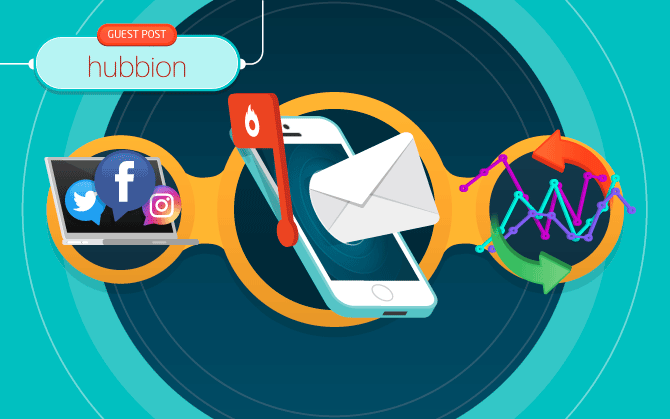
The do’s and don’ts of using drip marketing for digital products
Learn how to build a narrative and nurture a client slowly and steadily over a period of time.

What will we see in this post
According to one study, it takes anywhere between six to eight touches for a prospect to become a viable sales lead.
This is only the beginning though. As a marketer, you will need a lot many more touches before your lead can be converted into a paying customer.
The trouble with most marketing strategies, including advertising, is that it costs time and money to nurture and convert a customer. Bootstrapped businesses, especially those selling low cost digital products, may not always afford this luxury.
Drip marketing is one of the most effective marketing strategies in such instances. Not only is it extremely cost-effective, it also helps a marketer build a narrative and nurture a client slowly and steadily over a period of time.
But before we go ahead and discuss the specific strategies that make drip marketing effective, let us take a look at the basics.
What is drip marketing?
Drip marketing is a strategy where a business shares their message to prospects through a series of predetermined messages, called drips. The objective of a drip marketing campaign is to not pitch your product or service right away, but to instead nurture your target audience slowly and steadily over a period of time.
Although drip marketing is usually associated with email marketing, it is also not uncommon to make use of other platforms like social media for your campaigns.
Let us assume that you want to market an online course teaching your customers how to craft their own beer. Advertising your sales page right away may not be a good strategy since there are very few people actively looking for ways to craft their own beer.
Rather, what you could do is publish an ebook that beer connoisseurs may be interested in. You may then offer this ebook free to download in exchange for their email address. Once you have a prospect’s email address, it is easy to reach out to them on a regular basis with tips and tricks related to crafting beer. This strategy helps nurture them and convert them into a buyer down the line.
Executing a successful drip marketing campaign is easier said than done. In this article, we will take a look at some specific do’s and don’ts that a marketer must follow to sell their digital products.
Creating an effective lead magnet
Remember how we talked about publishing a free-to-download ebook that you can offer your target customers in exchange for their email address? In marketing terminology, this is called a lead magnet.
In essence, a lead magnet is anything that would push a prospect into offering their email address. Lead magnets come in multiple forms. But there are exactly three kinds of lead magnets that are most effective.
- Downloadable ebooks that your prospective customer may be interested in
- Free online tools that a user must register to use
- Research and survey reports relating to your prospect’s industry
The lead magnet you choose depends on your audience demographics. Someone interested in crafting their own beer could be lured in by a free ebook that contains very basic beer crafting recipes.
However, if you want to target real estate agents, you could promote a free tool to print marketing fliers or submit their property ad to multiple classifieds portals.
If your digital product is targeting CXOs of large companies, survey reports related to their industry can be a great way to capture their email address.
Creating an effective drip strategy
You must have come across this saying, “if you have nothing nice to say, don’t say anything at all”. This is absolutely true in the case of drip marketing.
The objective of a drip marketing campaign must be to nurture your client by communicating with them at regular intervals. Many marketers make the mistake of only adhering to a schedule and not necessarily taking care of what they say.
The average working professional receives nearly 122 emails per day (as of 2015). That is a lot. To effectively nurture your prospect, you must ensure that the email you send adds value to the recipient.
In addition to adding value, it is also important to nurture the recipient towards conversion. Many marketers make the mistake of sending a lot of valuable information that may not necessarily convince them to purchase your digital product.
Let us go back to the example of a seller who wants to promote his online course teaching buyers how to craft their own beer. He may add value to his drip marketing campaign by sharing more beer recipes to their subscribers. But this may backfire since the recipient is no longer incentivized to pay for the online course.
An alternate strategy is to talk about the various things the subscriber could do with a home-crafted beer. For example, you could talk about using a flavored beer in preparing sauce or other kinds of food items. The objective is to create interest among your recipients to learn to craft beer that they can then use in preparing such dishes. This strategy nurtures them and pushes them towards buying your online course.
Integrate email with social media
As we pointed out early on in this article, drip marketing is more than just email marketing. It is the use of a ‘drip’-based communication strategy to nurture your pipeline. Social media channels like Facebook and Instagram allow users to follow their favorite businesses and are fantastic tools to effect a drip marketing campaign.
To begin with, find the social media channel that is most popular among your target user. For instance, 59% of Instagram users are between the ages of 18 to 29. If your product appeals to this age group, it is a good idea to target Instagram.
At the same time, if you were publishing an online course that helps professionals get the most out of Microsoft Excel, then you should probably target a social network like LinkedIn.
Once you have identified the right social medium, the next step is to find a way to translate your drip marketing campaign to fit the medium. Instagram, for example, is highly visual. If you were using this medium to promote your beer crafting course, you may look at publishing photos and videos of the recipes you are promoting on your email newsletter.
The objective of this step is to expose your product from multiple perspectives to your target recipients. In addition to the exposure, this strategy also lets you make sure that subscribers you missed reaching out on email are taken care of over social media.
Effective Call-To-Action (CTA)
The success of any marketing campaign depends on how effective your CTA is. No matter how well you engage with and nurture your subscribers, it is highly unlikely for them to convert without a good call-to-action.
Marketers routinely make the mistake of slapping a ‘Buy Now’ button across the newsletter or social media channels. While your subscriber does not miss the CTA this way, it takes the subscriber’s focus away from the message that is supposed to nurture them.
The best way to increase conversion rates is to place your CTA contextually. Let us go back to the example of a drip marketing campaign where you teach your subscribers how to prepare sauce with home-crafted flavored beer. The first step in this recipe would be to get your flavored beer ready. You may interject at this point with a CTA that reads, “To know how to make your own flavored beer, buy our online course for just $4.99.”
Such a CTA is not blatantly promotional and is yet highly effective in driving visits and conversions from your sales page.
Sometimes, it is possible that your recipient does not specifically recall why they are receiving a newsletter from you in the first place. In order to avoid being marked as spam, marketers typically end a newsletter by reminding users when and how they got into your mailing list.
If your recipient does not recall signing up for your newsletter, they tend to scroll down to read this segment before deciding on the course of action. Recipients who unsubscribe are lost forever and may never come back to buy your product again. It is a good idea to promote your course with a CTA at this point.
In the case of an online course for crafting beer, your message could read something like this:
“You are receiving this email because you downloaded our free ebook “The Quick 5-Step Process To Craft Beer”. Our paid course is only $4.99 and includes comprehensive videos and advanced lessons to craft flavored beer. Check our course by clicking this link”
Track and repeat
The tips and tricks mentioned here may not always work for you and the results depend on your specific product and communication strategy. As always, it is a good idea to track your performance, tweak and test them in order to figure out the best strategy to nurture and convert your customers with drip marketing.
Author bio: Anand Srinivasan is the founder of Hubbion, a suite of free business apps and resources. Check out their free tool to discover the email address of anyone here.




